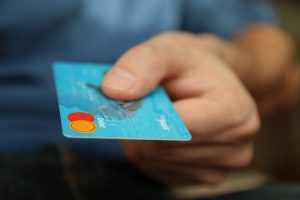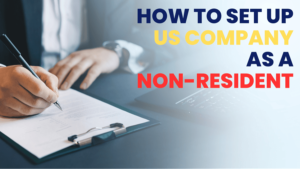Loyalty is Priceless: How Investing In Your Customers Is Investing In Your Business

Have you ever wondered how brands like Google or, more recently, Zoom have become so prevalent that their names have become synonymous with their services? To “Google” something is to look up a term on a search engine, and to “Zoom” someone is to have a video call with them. Part of their secret is their focus on customer loyalty.
A customer is loyal when they consistently choose the products or services of the same company over its competitors. Loyal customers are often less influenced by comparative issues like higher prices or lower availability as they prefer quality assurance from the businesses they trust.
According to Forbes, loyal customers are 50% more likely to try your new products and spend 31% more than new customers. Companies are interested in attracting new customers, but the relationship should not end at the sale. Instead, your company should earn the customer’s loyalty to maximize both parties’ benefits.
How To Earn Your Customer’s Loyalty
There are many things that a customer looks for before they decide to be loyal to a business. Particularly important to their decision is whether your company has consistent quality, extra benefits, and customer service.
Depending on your company’s services and products, you need to identify the most important factors to focus on. These criteria are looked at more closely below.
- Get to know your customers
Get to know your customers personally if you want to foster client loyalty. Find out their names, biographies, and purchasing tendencies. Everyone should be treated as a person, not just as a paying customer.
For instance, you might send a customized birthday message and a special offer to a consumer on their special day. Additionally, you want to send them emails that you are confident will resonate with them.
- Keeping in touch
Inform current consumers about new offerings, specials, and any other information that may alter the goods or services they typically seek from the firm. Tools like HubSpot and Marketo support multichannel communication, which can keep in touch with potential and existing clients on the same platform.
These marketing automation technologies integrate with well-known email, SMS, and social media platforms or natively support various digital communication channels.
- Provide high-quality products and services
The most obvious way to make a customer return is to have a high-quality standard for your company’s range of products and services. Consistently impressing them with the quality of your products/services ensures they enjoy their purchase and gain loyalty. After all, you are much more likely to turn to a trusted source than a stranger.
Loyal customers also serve as marketing all on their own. About 5-10% of all digital purchasers worldwide leave feedback, which has an estimated $400 billion global ecommerce revenue impact. Bad news travels fast, so having a consistent, high-quality product is essential.
- Personalize
Customers prefer a personalized experience when they purchase something. An excellent way to personalize their experience is to boost customer engagement. Ask them questions to determine what they want from your business and adjust your recommendation accordingly. They feel special when you listen to them and you deliver better service.
Restaurants are an excellent example of this criterion. Many restaurants live and die by the consistent food quality they serve. Smaller restaurants rely almost entirely on word-of-mouth marketing to attract new customers, and they tend to treat their regular customers better – offering preferential seating and priority reservations.
- Incentivize their loyalty
Assuming you already have a consistently high-quality product, why not take your efforts a step further? Letting your product speak for itself is an excellent method, but you can reward your customers even more by giving them extra benefits, incentivizing their loyalty.
One way you could give more importance to their loyalty is by employing a customer loyalty program. These programs are tangible rewards given to customers to incentivize them to continue using your products.
- Points Program
The most recognizable type is probably the reward points program, where customers gain points based on the time or money spent on your products/services. The customers then use the points to redeem rewards such as discounts, increased priority, or extra goods.
Strong loyalty programs consider the short-term boost in sales and the long-term goal of converting a customer into a fan.
- Upgrades
Another good example is an airline’s frequent flyer perks. Their best customers receive better rates, the occasional seating upgrade, and fast lanes when boarding. All of these make their experience smoother than their average flyer.
Airlines reward their returning customers and incentivize their regular customers to join their loyalty program. They’re telling customers, “Look how well we treat our best customers. Don’t you want to be pampered like this?”
A good loyalty program can work wonders; just ensure the rewards are real. Shallow, tacked-on rewards programs can be a turn-off for a customer.
- Provide impeccable customer service
Customer service is the human face of your business. It is an excellent way of showing that you care about your customers and their experiences with your product, making them loyal.
Part of having a good product has good customer service. Guide your customers at every step of their buyer’s journey, and ensure the process is as smooth and user-friendly as possible.
Availability is a huge part of good customer service. Answering questions and concerns goes a long way in convincing them to buy your product. A powerful tool for this is chatbots, which use automated responses to answer frequently asked questions.
However, chatbots are not enough. 60% of customers would still prefer talking to a human over a chatbot. Human representatives are much more adaptive to customer concerns, and customers are more reassured when a human has taken note of their issue.
- Encouraging feedback
This criterion is concerned with answering questions and the post-purchase follow-up. Ask about your best customers’ experiences with the process. Their feedback can help you improve the quality of future interactions, and they will appreciate your caring enough to ask.
As retaining customers is equally, if not more important than attracting new ones, make sure to market to your existing customers. Maximize the data you already know about them and inform them about the news that you know is relevant to their interests. Consumer electronics companies are usually the standard when it comes to customer service.
They use chatbots and representatives to answer any questions or concerns. Sales representatives inquire about potential customers’ needs to recommend the perfect product. They also offer troubleshooting and repair services post-purchase, ensuring a high-quality experience for the consumer.
Human touch is necessary to humanize your company and develop a stronger customer relationship. Customers don’t want to interact with a faceless corporation that is only interested in their money. They want to know that you care about them and their experience with your company.
Loyalty Is An Investment
While pouring all these extra resources into your customers after their purchase may seem like a waste, customer retention is a way to invest in your business. Making loyal customers and fans of your service improves your marketing, brand awareness, and revenue. It’s why big brands like Google and Zoom invest so much in providing quality services to their customers—for great and even bigger returns.
By having a consistent product, rewarding your customers for using your services, and offering assistance with a smile, your company can reap the rewards of having loyal customers. Hopefully, this article has helped you see that investing in your customers is the same as investing in your business.






